Disclosure: This article contains affiliate links. We may earn a commission from purchases at no extra cost to you, which helps our travel content.
There's something profoundly humbling about standing alone in the Alaskan wilderness, camera poised toward the heavens as curtains of emerald and violet light dance across the star-studded canvas above. As a filmmaker who has captured natural phenomena across six continents, I can attest that nothing quite compares to the raw, untamed beauty of Alaska in winter. Having recently completed a segment for my wildlife documentary series in the region, I extended my stay for a personal photographic odyssey through Anchorage and its surrounding wilderness. What began as a professional obligation transformed into a week-long love affair with this frozen frontier—a realm where light, landscape, and wildlife converge to create cinematographic perfection. Join me as I share the intimate details of my winter expedition, from technical settings for aurora photography to the hidden luxury accommodations that make this challenging environment surprisingly comfortable for the discerning traveler.
Preparing Your Kit: Essential Gear for Arctic Photography
When photographing in extreme environments like an Alaskan winter, your preparation can mean the difference between capturing once-in-a-lifetime shots and returning with nothing but frostbitten fingers and memory cards full of blurry disappointments.
My technical arsenal for this expedition centered around my workhorse mirrorless camera, selected specifically for its exceptional low-light capabilities—essential for aurora photography. I paired this with three primary lenses: a 14mm f/2.8 ultra-wide for night skies, a versatile 24-70mm for landscapes, and a 100-400mm telephoto for wildlife. The camera's full-frame sensor handled the extreme dynamic range between snow and shadow masterfully.
Beyond the obvious camera gear, the true heroes of arctic photography are often overlooked: your support equipment. After numerous polar expeditions, I've learned that battery management is paramount. I traveled with six spare batteries kept in insulated pouches close to my body, rotating them through my battery grip which provided extended shooting time and improved handling with gloves.
Equally crucial was my carbon fiber tripod with specialized snow feet—standard rubber feet become brittle and useless in sub-zero temperatures. For aurora shooting sessions that often lasted 3-4 hours in temperatures dropping below -20°C, I relied on chemical hand warmers taped strategically to my camera body to prevent battery drain and lens fogging.
Perhaps the most valuable addition to my kit was a custom-made camera cover fashioned from neoprene with strategic openings for controls. This allowed me to operate my equipment without exposing my hands unnecessarily to the elements while providing an additional layer of insulation for the sensitive electronics.
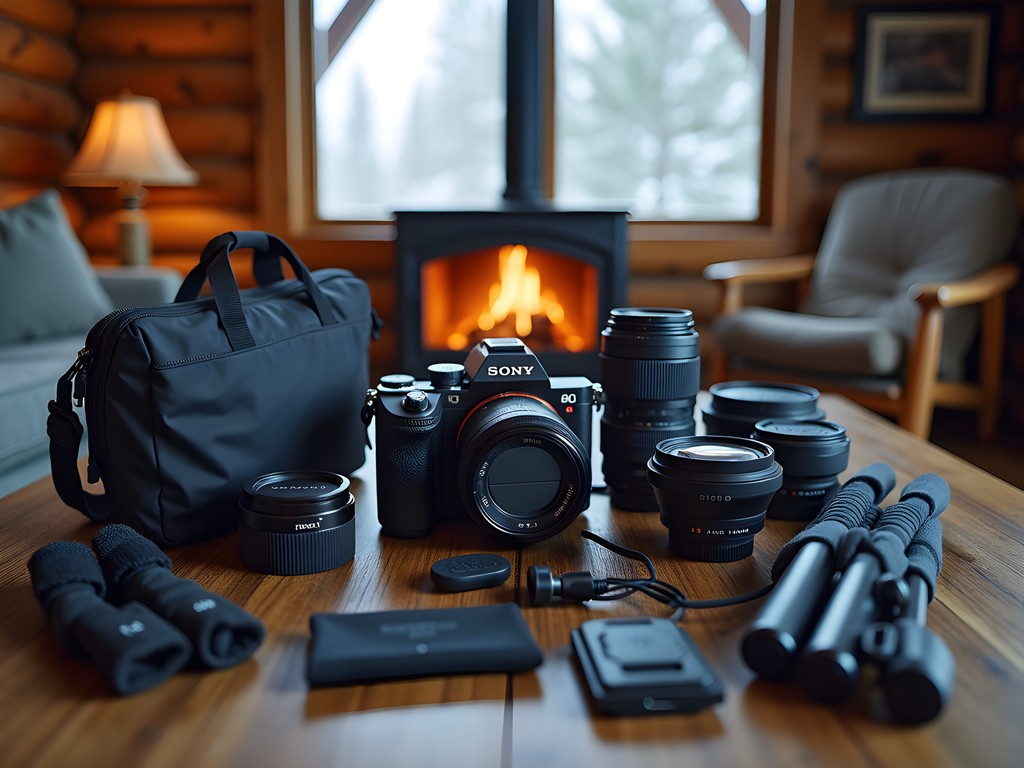
💡 Pro Tips
- Store batteries in interior pockets close to your body heat
- Use chemical hand warmers taped to your camera body to extend battery life
- Bring silica gel packets to combat condensation when moving between temperature extremes
Chasing the Aurora: Technical Mastery in Extreme Conditions
The northern lights are notoriously fickle performers, demanding both patience and technical precision from those who wish to capture their ethereal dance. My pursuit of these celestial displays led me to establish a base at the luxurious Alyeska Resort in Girdwood, just 40 minutes from Anchorage, where I could retreat to comfort between shooting sessions while remaining poised to deploy at a moment's notice when conditions aligned.
After consulting with local aurora chasers, I identified three primary shooting locations: Point Woronzof for its unobstructed northern horizon and dramatic foreground possibilities with the Chugach Mountains; Eklutna Lake for pristine reflections when conditions allowed; and the more remote Eagle River Nature Center, which required snowshoeing but rewarded with absolute solitude and minimal light pollution.
The technical challenges of aurora photography cannot be overstated. After considerable experimentation, I settled on a consistent starting point for camera settings: ISO 3200, aperture at f/2.8, and shutter speed between 8-15 seconds depending on the aurora's activity level. The faster the lights moved, the shorter my exposure needed to be to prevent detail-obscuring motion blur.
I found that manual focusing at infinity during daylight, then taping the focus ring in place, eliminated the frustration of autofocus hunting in darkness. For composition, I employed the 'rule of thirds' with intention—placing the horizon in the lower third to emphasize the celestial drama, while incorporating silhouetted treelines or mountain ridges to provide scale and context.
Perhaps my most valuable technical discovery was the utility of interval shooting. Rather than constantly triggering the shutter in -20°C conditions, I programmed my camera to take sequential exposures automatically using an intervalometer. This allowed me to set up multiple cameras simultaneously, retreating occasionally to my vehicle to warm up without sacrificing shooting time.
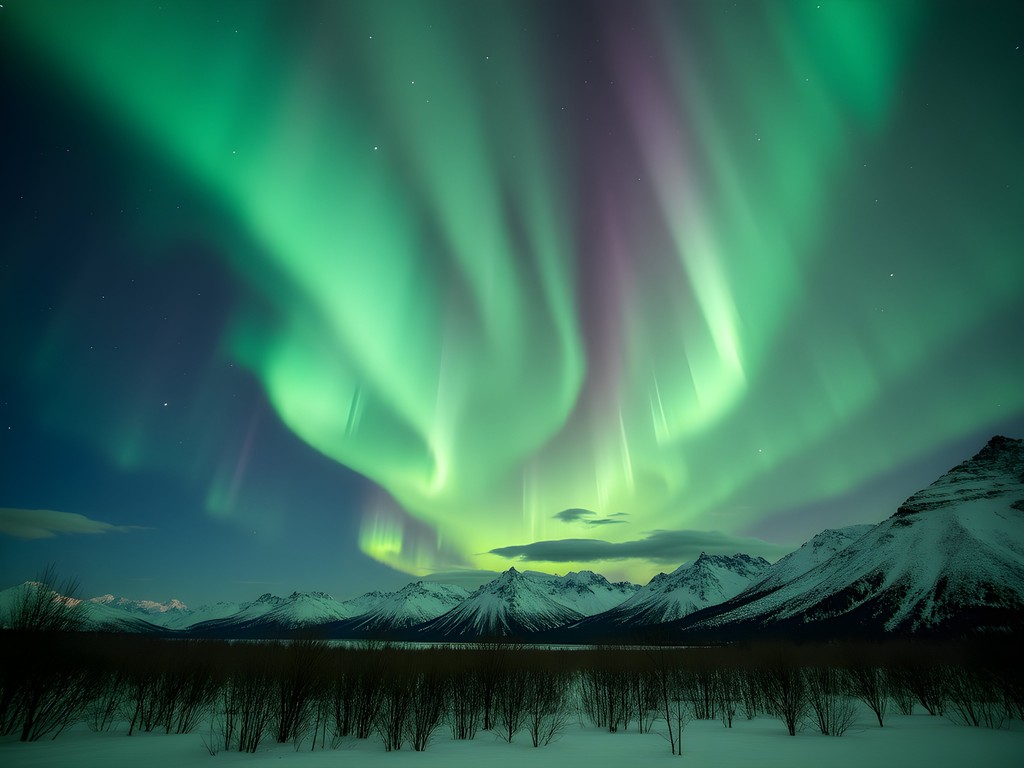
💡 Pro Tips
- Use the SpaceWeatherLive app for real-time aurora forecasting and alerts
- Arrive at your location at least an hour before expected aurora activity to set up and dial in compositions in twilight
- Bring a headlamp with red light mode to preserve your night vision while adjusting equipment
Wildlife Photography in Winter's Embrace
While the aurora may have been my primary quarry, Alaska's winter wildlife presented equally compelling photographic opportunities. As both a filmmaker and ornithologist at heart, I found myself drawn to the unique challenges of capturing animal behavior in extreme conditions.
My wildlife photography expedition began with a chartered flightseeing tour from Anchorage to Lake Clark National Park, where coastal brown bears can occasionally be spotted foraging even in winter months. Though bear sightings were sparse as expected for the season, the aerial perspectives of frost-covered landscapes proved worth the investment, providing context shots that established the magnificent scale of the region.
For more reliable wildlife encounters, I spent two full days at the Alaska Wildlife Conservation Center in Portage. While some photographers dismiss such controlled environments, the center's sprawling natural enclosures and rehabilitation focus provided ethical opportunities to photograph native species including wolves, musk oxen, and the magnificent wood bison against authentic Alaskan backdrops.
The technical approach to wildlife photography in arctic conditions requires significant adaptation. The brilliant white snow creates exposure challenges, typically demanding +1 to +1.5 exposure compensation to prevent underexposed subjects. I found shooting in manual mode with auto ISO (capped at 6400) allowed me to maintain control of depth of field while the camera adjusted for changing light conditions.
My most memorable encounter came during a guided excursion to track moose in Chugach State Park. After three hours of following fresh tracks through knee-deep snow, we spotted a magnificent bull moose browsing on willow branches. The contrast of his dark form against the pristine white landscape created a naturally high-contrast scene that required minimal post-processing.
For this wildlife work, my telephoto lens proved indispensable, though the cold significantly reduced its autofocus speed. I countered this by pre-warming the lens in my jacket before anticipated shooting opportunities and using back-button focus to prevent constant refocusing.
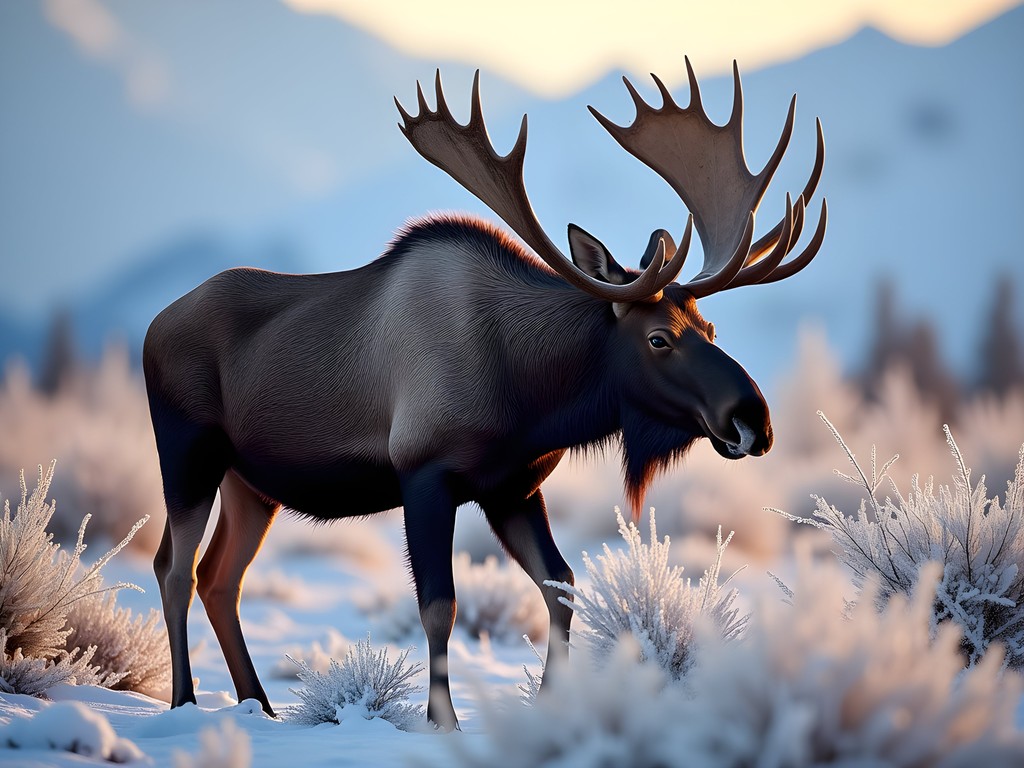
💡 Pro Tips
- Book wildlife guides with tracking experience rather than general tour operators
- Carry lens cleaning supplies specifically designed for sub-zero temperatures to handle condensation issues
- Use silent shooting mode when possible to avoid startling wildlife in the quiet winter landscape
Landscape Compositions: Finding Drama in Monochrome Wilderness
The winter landscape surrounding Anchorage presents a fascinating paradox for photographers: it's simultaneously monochromatic and filled with subtle complexities of texture, light, and form. My approach to landscape photography here required a fundamental shift from my usual color-oriented compositions to one that prioritized contrast, texture, and the interplay of light and shadow.
Turnagain Arm, just south of Anchorage along the Seward Highway, became my obsession for three consecutive mornings. During winter, the combination of extreme tidal fluctuations and sub-zero temperatures creates otherworldly ice formations along the shoreline. I arrived each day an hour before sunrise, using my headlamp to navigate the treacherous shore ice in darkness, setting up while the landscape was still bathed in deep blue twilight.
The technical challenge of these dawn shoots was maintaining sharpness throughout the frame while capturing the dramatic light. I typically employed focus stacking techniques—shooting multiple frames with different focus points and compositing them in post-production. For these sessions, apertures between f/8 and f/11 provided the optimal balance between depth of field and diffraction limitations.
For more intimate landscape compositions, I spent a full day exploring the winter hiking trails of Flattop Mountain. Rather than pursuing the typical grand vistas, I found myself drawn to the abstract patterns created by wind-sculpted snow and the delicate crystalline structures that formed on exposed vegetation. These macro opportunities required a complete gear shift to my 90mm macro lens and a collapsible reflector to control the harsh directional winter light.
Perhaps the most technically demanding landscape opportunity came during a helicopter excursion to photograph the Knik Glacier. The challenges were numerous: shooting through plexiglass windows, compensating for vibration, and working with extreme brightness ranges between deep blue glacier ice and blinding white snow fields. I countered these challenges by using a lens skirt pressed against the helicopter window, maintaining shutter speeds above 1/1000s, and bracketing exposures for HDR compositing later.
The artistic breakthrough in my landscape work came when I embraced the minimalist potential of the Alaskan winter. By isolating singular elements—a lone spruce tree, a wind-carved snow dune, or the sinuous line where sea ice meets open water—I created compositions that conveyed the essence of this extreme environment more effectively than my initial attempts at capturing its vastness.
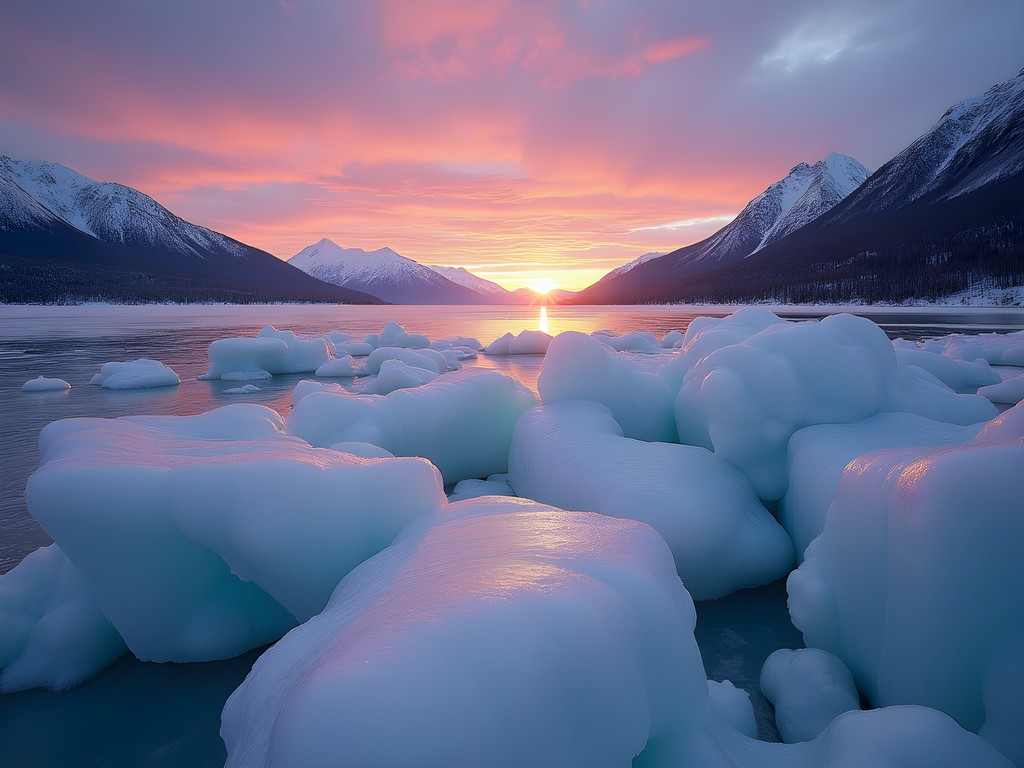
💡 Pro Tips
- Use a graduated ND filter to balance exposure between bright snow and darker skies
- Look for naturally occurring leading lines in snow drifts and ice formations to create depth in otherwise flat white scenes
- Schedule landscape shoots during the golden hours when the low winter sun creates dramatic side-lighting and long shadows
Luxury Basecamp: Comfort in the Wilderness
The physical demands of winter photography in Alaska cannot be overstated—long hours in extreme cold, difficult terrain navigation, and the constant vigilance required for wildlife safety all take their toll. After fifteen years of documentary filmmaking in challenging environments, I've learned that strategic luxury is not merely indulgence but a practical necessity for maintaining creative energy and technical precision.
My primary accommodation, Hotel Alyeska in Girdwood, proved to be the perfect photographer's basecamp. Their Specialty Photography Package included late checkout options critical for aurora chasers, a dedicated gear drying room, and 24-hour access to their mountain-view spa facilities—essential for recovering from long nights in the cold. The hotel's proximity to both Anchorage proper and key wilderness areas allowed me to maximize shooting time while minimizing transit.
For more remote excursions, I splurged on a three-night stay at Winterlake Lodge, accessible only by bush plane from Anchorage. While certainly an investment at over $1,000 per night, the experience provided unparalleled access to pristine wilderness landscapes and the expertise of guides intimately familiar with wildlife movement patterns. The lodge's renowned chef prepared custom meal schedules accommodating my irregular shooting hours—having a gourmet midnight meal waiting after a successful aurora session became a cherished ritual.
Perhaps the most valuable luxury was hiring Ronn Murray, a local aurora photography specialist, for two nights of guided shooting. Beyond his intimate knowledge of weather patterns and viewing locations, Ronn provided invaluable assistance with equipment management in extreme conditions and creative perspectives I might have otherwise missed.
For specialized wildlife opportunities, I arranged a private photography excursion with Alaska Photo Treks, whose guides constructed temporary blinds near known eagle feeding areas along the Chilkat River. This bespoke experience allowed for intimate raptor photography impossible on standard tours.
My most extravagant indulgence was chartering a helicopter equipped with doors that could be safely removed for unobstructed aerial photography. While expensive at approximately $1,500 per hour, the resulting footage of ice-bound landscapes provided perspectives impossible to capture by any other means. For serious photographers with sufficient budget, I recommend aerial stabilizer to counteract helicopter vibration when shooting video sequences.
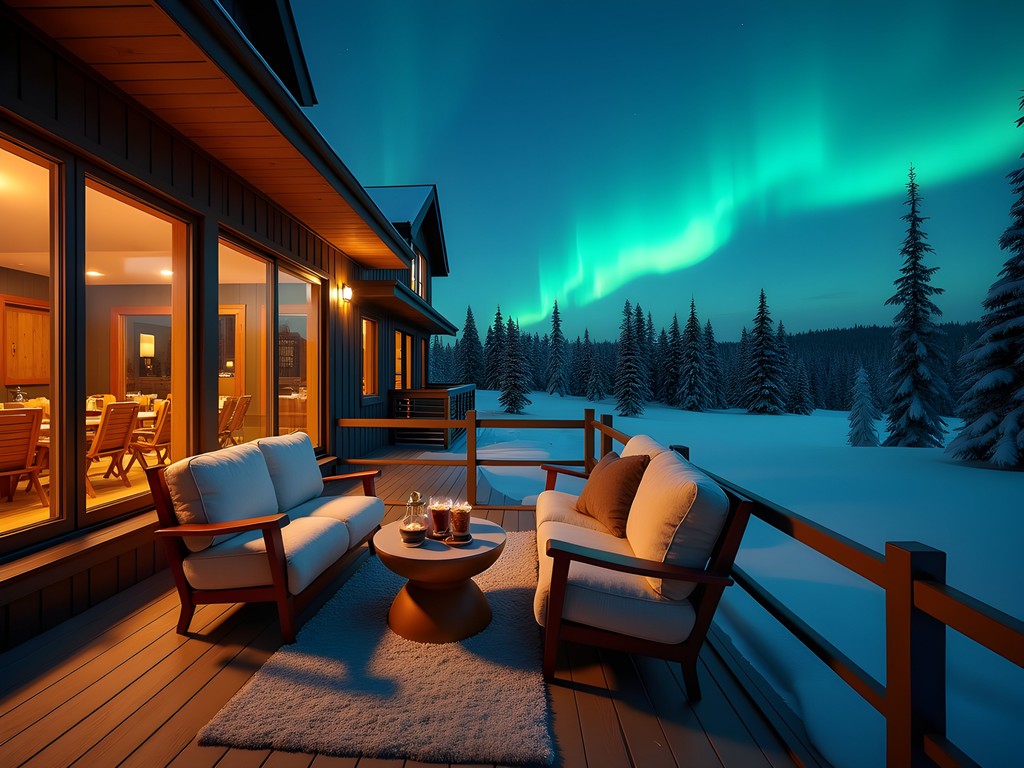
💡 Pro Tips
- Book accommodations with 24-hour kitchens or meal service to accommodate irregular shooting schedules
- Request a room with northern exposure and blackout curtains to balance aurora viewing with proper daytime rest
- Consider splitting your stay between Anchorage proper and outlying areas to maximize shooting diversity without excessive daily commutes
Final Thoughts
As I review the images captured during my week in Anchorage—over 3,000 frames distilled to perhaps two dozen truly exceptional photographs—I'm reminded that wilderness photography is as much about the experience as the results. The hours spent in silent communion with the landscape, the physical challenges overcome, and the moments of pure awe when the aurora unfurled above me have become as valuable as the images themselves. Alaska in winter demands everything from a photographer: technical precision, physical endurance, creative flexibility, and above all, patience. Yet it rewards these investments with images of raw, untamed beauty impossible to capture elsewhere. Whether you're an experienced photographer seeking to push your technical boundaries or simply someone who appreciates the meditative aspects of landscape photography, Anchorage in winter offers a canvas unlike any other. I came seeking the perfect aurora shot; I left with a profound connection to one of our planet's last true wilderness frontiers—and yes, a memory card full of images that will inform my cinematography for years to come. The question isn't whether you should photograph Alaska in winter, but rather: are you prepared for how it might change you?
✨ Key Takeaways
- Winter photography in Alaska requires specialized gear preparation and battery management strategies
- The best aurora photography combines technical precision with location scouting and patience
- Wildlife photography opportunities exist year-round with proper guidance and tracking
- Strategic luxury accommodations are essential for maintaining creative energy in extreme conditions
📋 Practical Information
Best Time to Visit
January-March for optimal northern lights and winter landscapes
Budget Estimate
$7,500-12,000 for one week including luxury accommodations, specialized guides, and equipment rentals
Recommended Duration
Minimum 7 days, ideally 10-14 days to account for weather variables
Difficulty Level
Challenging
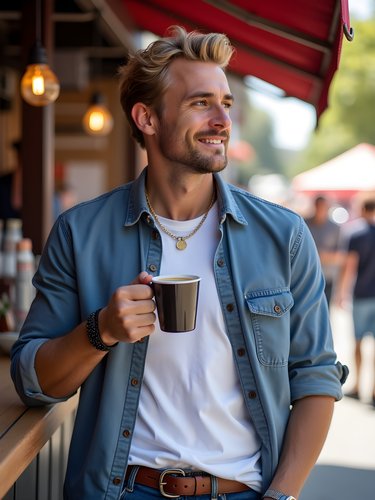
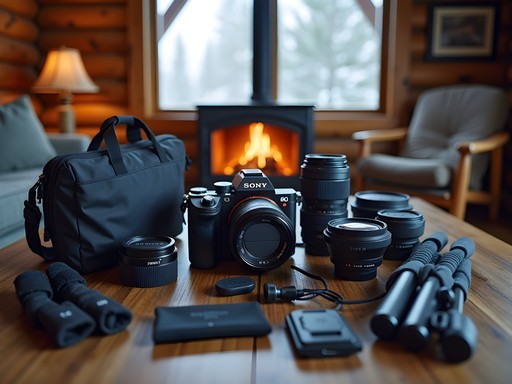

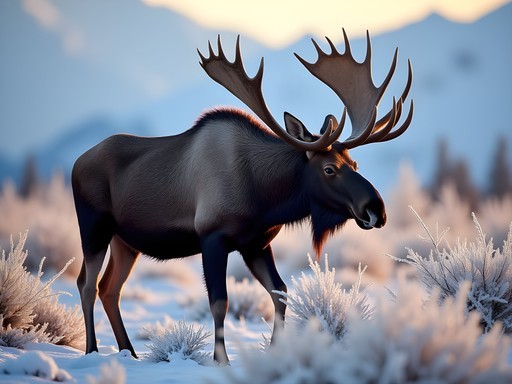
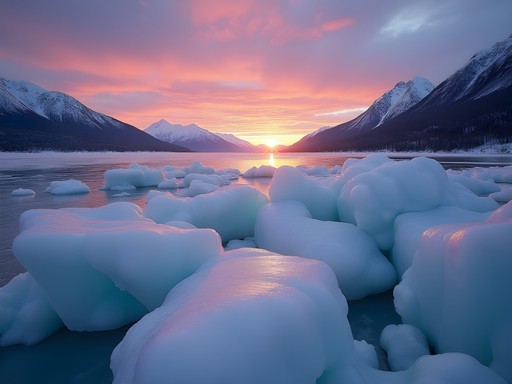
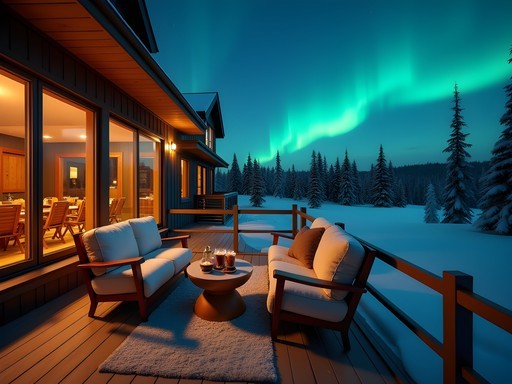









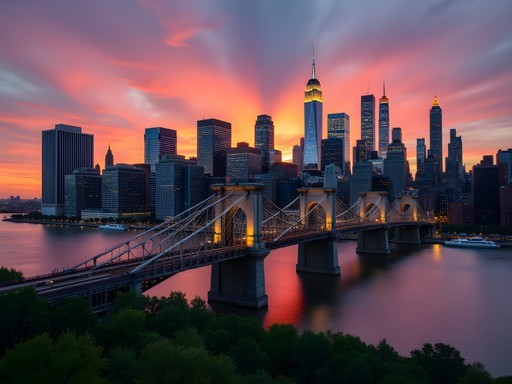
Comments
skytime
What lens do you recommend for capturing both the landscape and the full aurora display? I only have room to pack one or two lenses for my trip.
Avery Gordon
If you can only bring one lens, I'd recommend a fast wide-angle - something like a 14-24mm f/2.8 is ideal. If you can bring two, add a 24-70mm for versatility with wildlife and landscape details.
skytime
Thanks! That helps a lot with my planning!
Douglas Bradley
Avery, your technical breakdown of aurora photography settings is perhaps the most comprehensive I've seen. I particularly appreciate your discussion of the challenges in balancing ISO sensitivity with exposure time when the lights are moving quickly. I spent three weeks in Alaska last winter documenting the ecological impact of climate change, and found myself constantly adjusting between settings as the aurora intensity fluctuated. One technique I found useful was to shoot a quick bracketed series when the aurora was particularly active - this gave me options in post-processing and sometimes captured moments of intensity I would have missed with a single exposure approach. Your section on wildlife photography in winter conditions resonated deeply. The stark contrast between animal subjects and snow creates both opportunities and challenges. Did you experiment with flash diffusion at all for your closer wildlife work?
Avery Gordon
Thanks for the thoughtful comment, Douglas! Bracketing is indeed invaluable for aurora work - I should have emphasized that more. Regarding wildlife flash, I mostly relied on natural light, but did experiment with a very subtle fill flash (at about 1/16 power) with a homemade diffuser for some close-up fox portraits at dawn. The results were mixed - sometimes it added that catch light in the eyes that brings an image to life, other times it felt intrusive. Always a delicate balance in wildlife work.
George Hayes
Avery, this guide is exactly what I needed! Taking my family to Anchorage this December for our first aurora adventure. My 12-year-old daughter has become obsessed with night photography, so your section on camera settings is going to be her bible. Last year we tried photographing stars in Yosemite and learned the hard way about cold-weather battery issues. I invested in a battery grip after that experience, which has been a game-changer for extended shooting sessions. Question for you - how manageable was it to switch lenses in those temperatures? I'm debating between bringing multiple camera bodies versus just swapping lenses when needed. With kids in tow, I'm trying to balance good photography with not making everyone miserable waiting for dad!
citylover
Not Avery, but I found changing lenses in Alaska to be a nightmare. Condensation city! I'd stick with one versatile lens if possible.
George Hayes
Good point! Maybe I'll just bring the 24-70mm and call it a day. Thanks for the tip!
sunsetmate
That shot with the moose silhouetted against the aurora is incredible! Pure magic.
mountaintime
Just got back from Anchorage last month and your post is giving me serious nostalgia! We got lucky with 3 nights of aurora viewing. The tip about adjusting exposure settings on the fly was a game changer - my first night photos were all blurry until I figured out the sweet spot between ISO and shutter speed. That section about preparing for the cold is no joke either - my camera battery died within 20 minutes until I started keeping spares in my inner pocket!
George Hayes
Did you try any of the spots Avery mentioned near Kincaid Park? I'm planning a family trip there this winter and trying to figure out if it's accessible enough with kids.
mountaintime
Yes! Kincaid was perfect - we parked at the main lot and only had to walk about 10 minutes to get away from the light pollution. Definitely doable with kids, but bring a sled to pull them if they get tired. The trails are well-maintained.
George Hayes
That's super helpful, thanks! Did you rent a car or use the shuttle services mentioned in the post?
mountaintime
We rented an SUV with winter tires. Worth every penny since we could chase the aurora on our own schedule!
citylover
Wow, those aurora shots are breathtaking! Makes me want to brave the cold just to see them in person.
beachperson5500
Beautiful shots! I'm planning a trip in November but worried about the extreme cold for photography. How did you keep your hands warm enough to operate the camera controls? And did you have any issues with condensation when moving between warm vehicles and the freezing outdoors?
Avery Gordon
Great question! I used thin merino liner gloves under fingerless mittens that fold back - gives you dexterity when needed but warmth between shots. For condensation, I kept my gear in airtight bags when transitioning temperatures and let everything acclimate slowly. Also, silica gel packets are your best friend!
Douglas Bradley
If I might add to Avery's excellent advice - I've found that hand warmers tucked into your gloves make a world of difference. I also keep one in my camera bag near spare batteries. Just be careful not to place them directly against the camera body.
Hunter Thompson
Mate, your article couldn't have come at a better time! I'm heading to Anchorage in September and photography is my main goal. I've done the Northern Lights in Iceland, but Alaska seems like a whole different beast. That section on preparing your kit for the extreme cold is gold - I learned the hard way about batteries dying in Iceland! Did you find any particular locations around Anchorage that were more reliable for aurora spotting? I've heard Knik River area is good but would love your insider tips!
Avery Gordon
Thanks Hunter! Knik River is excellent, but I also had great luck at Glen Alps (Flattop Mountain trailhead) - less light pollution and stunning foreground elements. Just bring extra layers, it gets brutal up there!
Hunter Thompson
Glen Alps - noted! Just added it to my itinerary. Cheers for the tip!
tripzone3755
Those aurora shots are absolutely mind-blowing! Makes me want to book a ticket to Anchorage right now!
MountainWanderer
That shot with the moose silhouette against the aurora is absolutely incredible! Pure magic.
Venture X
Premium card with 2X miles, $300 travel credit, Priority Pass